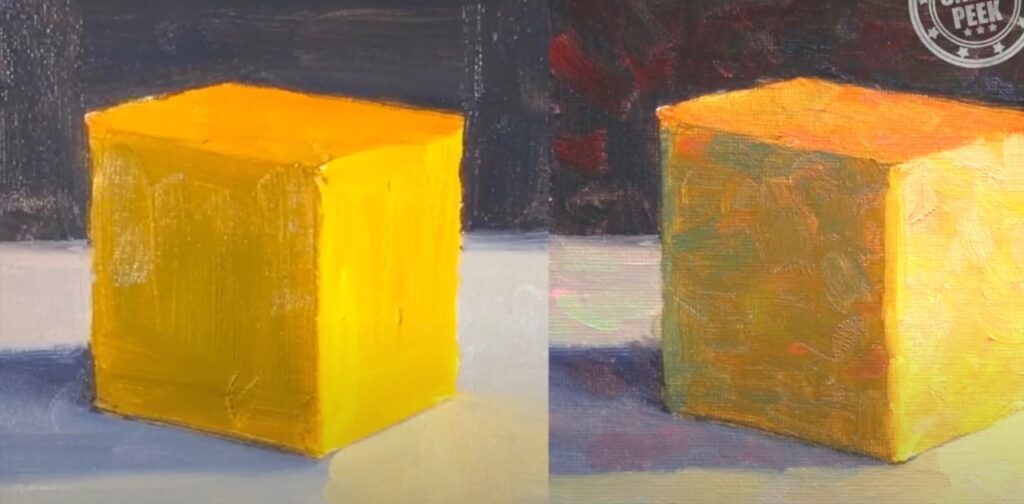Renaissance Italy and 19th Century French Impressionism are often regarded as iconic milestones in the timeline of art. A common technique notable in many of the exemplary pieces from these eras is the broken color technique. Artists of repute, such as Monet and Renoir, frequently employed this technique, leveraging it as a tool for creative expression and rendering their exquisite landscapes and portraits. Understanding this compelling technique is a significant addition to the knowledge arsenal of any art enthusiast or practitioner.
Understanding the Broken Color Technique
The broken color technique is a fascinating concept to explore, both for its historical significance and its continued relevance in the world of art. The broken color technique is, in essence, an ingenious method of color application that gives the artwork a unique visual appeal. With a robust understanding of this technique, artists can experiment with color dynamics, creating pieces that are both visually striking and emotionally resonant.
Why You Should Try the Broken Color Technique
The potency of the broken color technique lies in its ability to bring a fresh perspective to your art. It opens a new spectrum of creative possibilities, enabling you to express yourself more vibrantly on canvas. Whether you are new to the world of painting or an experienced artist looking to push your boundaries, mastering the broken color technique can be a game-changer.
Using the Broken Color Technique to Elevate Your Art
The application of the broken color technique is not restricted to any specific genre of painting. It can be successfully employed in both landscapes and portraits to create visually captivating artworks. Understanding how to use this technique to strategically play with color, light, and perception can help your artworks stand out, securing a unique artistic identity for yourself.
How to Make Art Stand Out Using the Broken Color Technique
The broken color technique can be an excellent tool for artists to elevate their work and develop a distinct style. Here are a few insights into how this can be achieved:
- Experiment with Tools: Try out different application tools (brushes, palette knives) to see which one can best achieve the broken color effects you’re looking for;
- Observe and Learn: Study the work of artists who use the broken color technique, such as Paul Wright. Understand their unique approach and incorporate it into your practice;
- Master the Color Theory: A deep understanding of color theory can aid in creating eye-catching art through the broken color technique. Able to differentiate and strategically place warm and cool colors can create a visually striking contrast.
The Allure of the Broken Color Technique: Why Should Artists Embrace It?
An artist’s journey is a never-ending exploration of techniques, styles, and materials. There is an exhilarating wealth of possibilities to experiment with, and among these, the broken color technique holds a special allure. Stepping away from the traditional blending methods teaches artists to perceive colors, light, and composition differently.
Employing the broken color technique injects vitality and dynamism into the artwork. Instead of presenting viewers with a perfectly blended, almost photographic representation, the use of distinct, unblended strokes creates an active engagement. Onlookers are subtly invited to engage in the act of blending the strokes visually, thereby experiencing the artwork in a more engaging way.
Here are some compelling reasons why artists should consider incorporating the broken color technique into their art:
- Play of Light and Colour: The application of separate color strokes enhances the play of light and color. The juxtaposition of different shades and tones can create interesting visual effects, especially in terms of how light is perceived;
- Artistic Interest: Unblended strokes create layers of color, imparting depth and interest to the artwork. The viewers’ eyes are drawn to these nuances, making the viewing experience more intriguing;
- Unique Style Development: Embracing this technique can significantly influence an artist’s style. By consistently using the broken color technique, artists can establish a distinctive aesthetic that sets their work apart in the art world.
So, why not delve into this fascinating technique and unlock the potential it holds for artistic creation? Adopting the broken color technique can be the catalyst for creating truly vibrant, energetic art that connects with viewers on a deeper level.

Renaissance Italy and 19th Century French Impressionism represent pivotal points in art history, notably for their use of the fragmented hue technique. Esteemed artists like Monet and Renoir used this method for creative expression, producing stunning landscapes and portraits. Understanding this technique is crucial for art enthusiasts and practitioners.
Key aspects of the fragmented hue technique:
- Application Across Genres: Suitable for both landscapes and portraits, it allows strategic manipulation of color, light, and perception;
- Techniques for Mastery: Experiment with different tools, study the works of artists like Paul Wright, and master color theory;
- The Technique’s Allure: Encourages viewing colors, light, and composition differently, involving the viewer in an interactive experience;
- Incorporating in Plaster Paintings: When applied to plaster paintings, the fragmented hue technique enhances texture and color dynamics, creating a vibrant, multi-dimensional effect.
Final Thoughts
If you’ve ever been in awe of the vibrant colors and dynamic light in the works of the Impressionists or modern-day artists like Paul Wright, you now know the secret. The broken color technique, with its magic of unblended color strokes, is an incredible weapon in an artist’s arsenal. Whether it’s a sweeping landscape bathed in sunlight or a soulful portrait cleverly lit, the broken color technique can be your go-to strategy.
